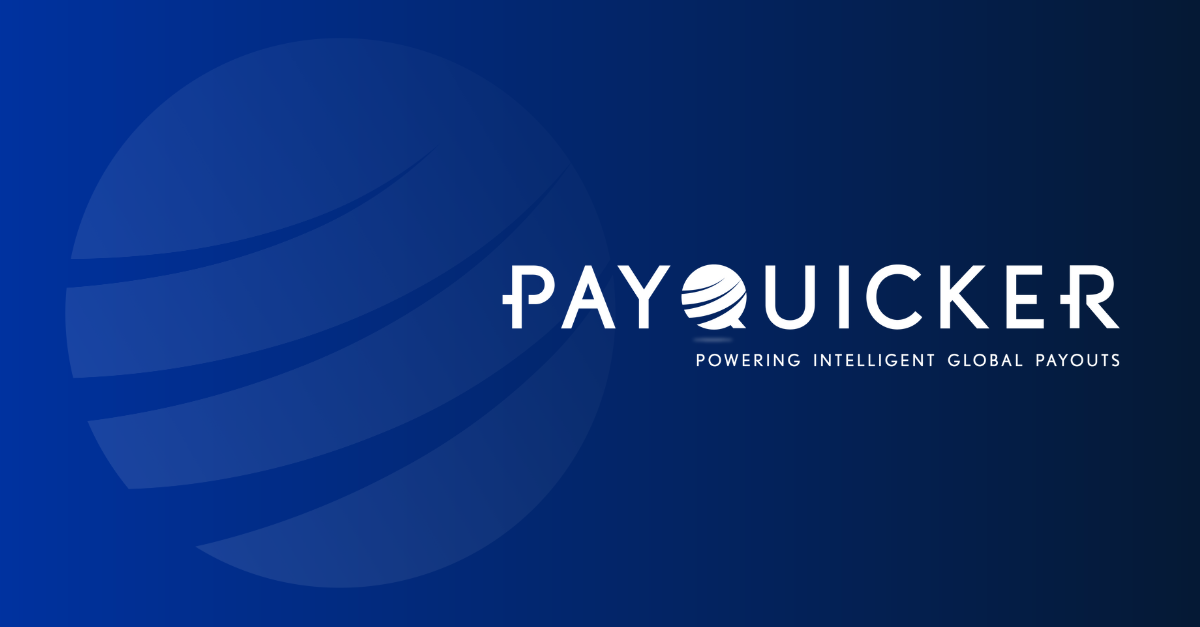How to Make Efficient Payments: Guide to Affiliate Payout Methods
Imagine this: You’ve built an affiliate program attracting top-tier marketers, influencers, and content creators. They’re driving traffic, generating sales, and fueling your business growth. But then—payout delays start creeping in. Affiliates begin questioning your reliability. Your best partners start looking elsewhere.
Sound familiar?
Affiliate marketing isn’t just about conversion rates and commission structures—it’s about trust. And nothing erodes trust faster than late, inconsistent, or complicated affiliate payouts.
Affiliate networks prioritizing fast, seamless, and flexible payouts don’t just keep affiliates happy; they retain top performers, increase program engagement, and drive more revenue. The reality is simple: the better your payout system, the stronger your affiliate relationships—and the bigger your bottom line.
But how do you choose the right payout methods? How do you balance cost-efficiency, speed, and compliance while managing hundreds or thousands of affiliate partners?
This guide will break it all down, covering:
- The most effective affiliate payout models and how to choose the right one
- A deep dive into payment methods—from PayPal to cryptocurrency
- How to automate payouts to save time, reduce errors, and scale effortlessly
- Best practices for handling global affiliates, tax compliance, and payout disputes
- Common payout challenges and how to solve them before they cost you affiliates
Ready to streamline your affiliate payouts and keep your best affiliates loyal? Let’s dive in.
Common Types of Affiliate Payout Models
Pay Per Sale (PPS)
Under PPS, the affiliate earnings are tied directly to each purchase. Affiliates receive a percentage or flat commission rate for every sale they drive. This model is popular because it directly correlates with revenue and ensures you pay affiliates only for accurate results.
Pay Per Click (PPC)
With PPC, affiliates earn for every click they generate. While this can drive high traffic, it can also be costly if those clicks don’t convert into sales. Monitoring conversion rates and optimizing landing pages to ensure you’re spending effectively is crucial.
Pay Per Lead (PPL)
PPL focuses on generating qualified leads, such as email sign-ups or demo requests. This is common in B2B industries where a single lead can result in a high-value business opportunity.
Recurring Commissions
Often used by SaaS or subscription-based companies, recurring commissions pay affiliates monthly or annually as long as the customer remains active. Affiliates love this model because it provides a steady stream of income.
Pay Per Impression (PPI) (Bonus Model)
Though less common, some ad networks offer PPI, in which affiliates or publishers are paid per 1,000 ad impressions. This is most applicable for high-traffic sites that focus on brand visibility.
How to Choose the Right Payout Methods
Key Factors
- Cost: Consider transaction fees, currency conversion fees, and the overhead involved. High fees can eat into your affiliate commission margins.
- Speed: How fast do affiliates receive their payments? Timely payments keep affiliates motivated.
- Accessibility: Does your chosen payout method support the bank account or digital wallet options that your global affiliates prefer?
- Payout Frequency: Offering flexible payout schedules (hourly, daily, or weekly) can provide affiliates with more predictable cash flow than platforms that process payments only once or twice a month.
Tax Forms and Compliance
In regions like the U.S., you may need to issue tax forms (1099-MISC) to affiliates who exceed certain earning thresholds. The EU has VAT considerations, and different countries have varying regulations. Your affiliate dashboard should track affiliate earnings and generate the necessary tax forms.
International Affiliates and Global Payouts
Handling international affiliates involves navigating different currencies, exchange rates, and local regulations. Look for a single platform to orchestrate global payments and streamline everything from local taxes to multiple currency support.
Check out PayQuicker’s Affiliate & Influencer Networks guide for more insights on managing cross-border payouts.
Best Payment Methods for Affiliates
Selecting the right payment methods for affiliate payouts is essential to keeping affiliate marketers engaged and motivated. The proper payout process ensures that affiliate partners receive their affiliate payments quickly, securely, and through their preferred payment method.
PayQuicker
PayQuicker is designed to provide instant, secure, and globally accessible payouts, making it a top choice for affiliate marketing programs prioritizing efficiency and reliability.
- Fast & Automated Payouts – Ensures affiliates receive instant payments without delays.
- Global Reach – Supports multi-currency payouts, helping affiliates get paid in their local currency with minimal conversion fees.
- Multiple Payment Options – Allows businesses to send affiliate payments via bank transfers, prepaid debit cards, digital wallets, and more in a single, streamlined platform.
- Flexible Payout Frequency – Offers customizable payout schedules, including hourly, daily, and weekly options, ensuring affiliates can access their earnings when they need them.
- Lower Fees – Helps businesses maximize revenue generated by reducing unnecessary transaction fees.
- Compliance & Tax Support – Automates tax form processing and compliance for international affiliates.
Using PayQuicker, businesses can streamline their payout process, reduce costs, and keep affiliate marketers happy with timely and flexible affiliate payments.
Other Common Payment Methods for Affiliate Payouts
PayPal
- Pros: Widely used, convenient for many affiliate marketers.
- Cons: High transaction fees, currency conversion costs, and limitations in some countries.
Bank Transfers and Wire Transfers
- Pros: Secure and direct payments to an affiliate partner’s bank account.
- Cons: Slower processing times and higher transaction fees compared to PayQuicker.
Payoneer
- Pros: Supports global payments, making it a popular option for affiliate networks.
- Cons: Not as widely used as PayPal and may have fees for currency conversion.
Skrill
- Pros: Offers quick affiliate payments, especially in European and Asian markets.
- Cons: Availability varies by region, and fees may be higher than other options.
Cryptocurrency
- Pros: Faster transactions and lower fees in some cases.
- Cons: Market volatility can affect affiliate earnings, making it a risky option.
Prepaid Debit Cards
- Pros: Great for affiliates without traditional banking access, offering easy spending and tracking. PayQuicker and other providers facilitate prepaid card options for seamless payouts.
- Cons: Some cards come with fees and withdrawal limitations.
Automating Affiliate Payouts: Tools and Benefits
Manual processing for multiple affiliates is time-consuming, prone to errors, and difficult to scale. Automation tools integrate with your affiliate software and streamline everything—from tracking commission rates to issuing direct payouts. Some top automation tools include Trolley, PartnerStack, Everflow, and PayQuicker’s global payouts orchestration platform.
Benefits of Automation
- Accuracy: Automated solutions reduce human error in calculating commissions.
- Scalability: Easier to handle large volumes of affiliates, especially during seasonal or promotional spikes.
- Compliance: Automation helps keep track of local regulations, generating necessary tax forms and logs.
- Time Savings: Your finance team can focus on higher-value tasks rather than manual payout administration.
Managing Affiliate Taxes & Compliance
Tax regulations differ from country to country, making compliance a critical part of any affiliate program. In the U.S., you must issue IRS Form 1099-NEC if affiliates exceed $600 in earnings. VAT becomes a consideration in the EU, especially if affiliates register as businesses. Collecting tax information and issuing the correct tax forms prevents legal complications and builds trust with your affiliate community.
Common Payout Issues & How to Solve Them
- Payment Delays: Often caused by manual processes or insufficient funds. Mitigate this with automated or scheduled payouts through a single platform.
- Disputes Over Commission: Occurs when affiliates claim they haven’t been properly paid. Maintain transparent analytics within your affiliate dashboard to show how commission rates are calculated.
- Fraud Prevention: Some affiliates may engage in illegitimate traffic. Use fraud detection tools, IP tracking, and thorough auditing to ensure only genuine sales or leads are rewarded.
- Chargebacks and Refunds: Negative transactions affect your bottom line. Set clear policies for reversing or adjusting commissions if a purchase is refunded or canceled.
Scaling Affiliate Payouts as Your Program Grows
As your affiliate marketing program attracts more affiliates, you must ensure your systems can handle higher payout volumes. This scaling involves:
- Infrastructure Upgrades: Look for global payout solutions that handle local currencies, reduce transaction fees, and automate currency conversion.
- Efficient Onboarding: Offer a streamlined affiliate onboarding experience with a clear process for linking bank or e-wallet accounts.
- Flexible Payout Frequency: Provide multiple options—weekly, bi-weekly, monthly—so affiliates can choose what suits them best.
- Unified Data Tracking: Centralize your affiliate data (clicks, leads, and commissions) in one affiliate dashboard, making it easier to monitor growth trends.
Related Reading: Check out PayQuicker’s Affiliate Program Management article for more tips on handling an expanding network of affiliate partners.
Influencer Payments Explained: Methods, Rates, and Trends
Although influencer marketing differs slightly from affiliate marketing, the concept is similar: brands pay influencers (usually with flat fees or product sponsorships) for content creation and brand promotion. With rising interest in influencer collaborations, many affiliate programs now include influencer tiers or specialized influencer track options.
Table: Influencer Earnings and Payout Trends
Below is a quick snapshot of how much influencers can earn, common influencer payout structures, and how brands typically pay them. Payouts vary widely depending on audience size, engagement rate, industry niche, and campaign scope.
| Influencers | influencer payouts | Pay influencers | influencer | influencers | payouts | pay | Influencer | payout |
| Nano-Influencers | $10 – $50 per sponsored post | Weekly or monthly bank transfers | 1K–10K followers | Great for niche markets | Low-volume, quick payouts | Through PayPal or direct deposit | Smaller deals | Usually flat or product-based |
| Micro-Influencers | $50 – $300 per post | Often via PayPal or e-wallet | 10K–50K followers | Targeted brand collabs | Flexible payout frequency | Usually net-30 terms | More personal reach | Performance-based or flat-rate |
| Mid-Tier Influencers | $300 – $1,000 per post | Wire transfer or Payoneer | 50K–500K followers | Significant reach | Might have standard contracts | Typically monthly | Higher brand trust | Often combine flat + performance |
| Macro-Influencers | $1,000 – $5,000+ per post | Usually, a direct bank account | 500K–1M followers | Broad audience | Set payout frequency (net-15 or net-30) | Negotiable rates | Higher brand alignment | Often includes a brand partnership |
| Mega/Celebrity Influencers | $5,000+ to six figures per post | Agency-managed transactions | 1M+ followers | Massive brand impact | Contract-based payouts | Could be partially upfront | Endorsement deals | Highly negotiated contracts |
Note: This table is based on aggregated data from sources like Influencer Marketing Hub. Actual rates can vary significantly.
Pay Affiliates Smarter, Scale Faster, and Win Bigger
A thriving affiliate marketing program isn’t just about driving traffic and increasing conversions—it’s about ensuring affiliate marketers get paid accurately, on time, and through their preferred payment method. A poor affiliate payment experience can drive top performers away, while a seamless payout process fosters trust, loyalty, and long-term growth.
To keep your affiliate marketers engaged and maximize your revenue generated, focus on the following best practices:
- Automate Affiliate Payments – Use specialized platforms like PayQuicker to streamline payouts, eliminate delays, and reduce manual errors.
- Be Transparent – Give affiliates real-time access to affiliate earnings, payout schedules, and payment status to build trust and credibility.
- Optimize Payment Methods – Offer flexible payout methods, including PayPal, wire transfer, prepaid debit cards, and cryptocurrency, to accommodate different affiliate marketers.
- Think Globally – Support global payments by providing multi-currency options and localized payout solutions for international affiliates.
- Ensure Compliance – Stay ahead of tax forms and reporting regulations to avoid legal risks and maintain a compliant affiliate marketing program.
- Leverage Data for Optimization – Track which affiliate link placements drive the highest revenue generated and refine your payout structure to maximize conversions.
- Reward Top Performers – Implement a tiered commission structure or offer bonuses to affiliate marketers who consistently deliver results.
- Offer Flexible Payout Frequency – Providing payout options on an hourly, daily, or weekly basis ensures affiliates can access their earnings faster, improving retention and engagement.
The bottom line? When you prioritize efficient affiliate payments, you create a program where affiliate marketers are motivated to promote your brand, leading to increased revenue generated and sustainable growth.
Ready to transform your payout process? Book a Demo with PayQuicker and see how automated, global affiliate payments can help you scale your affiliate marketing program faster than ever.











